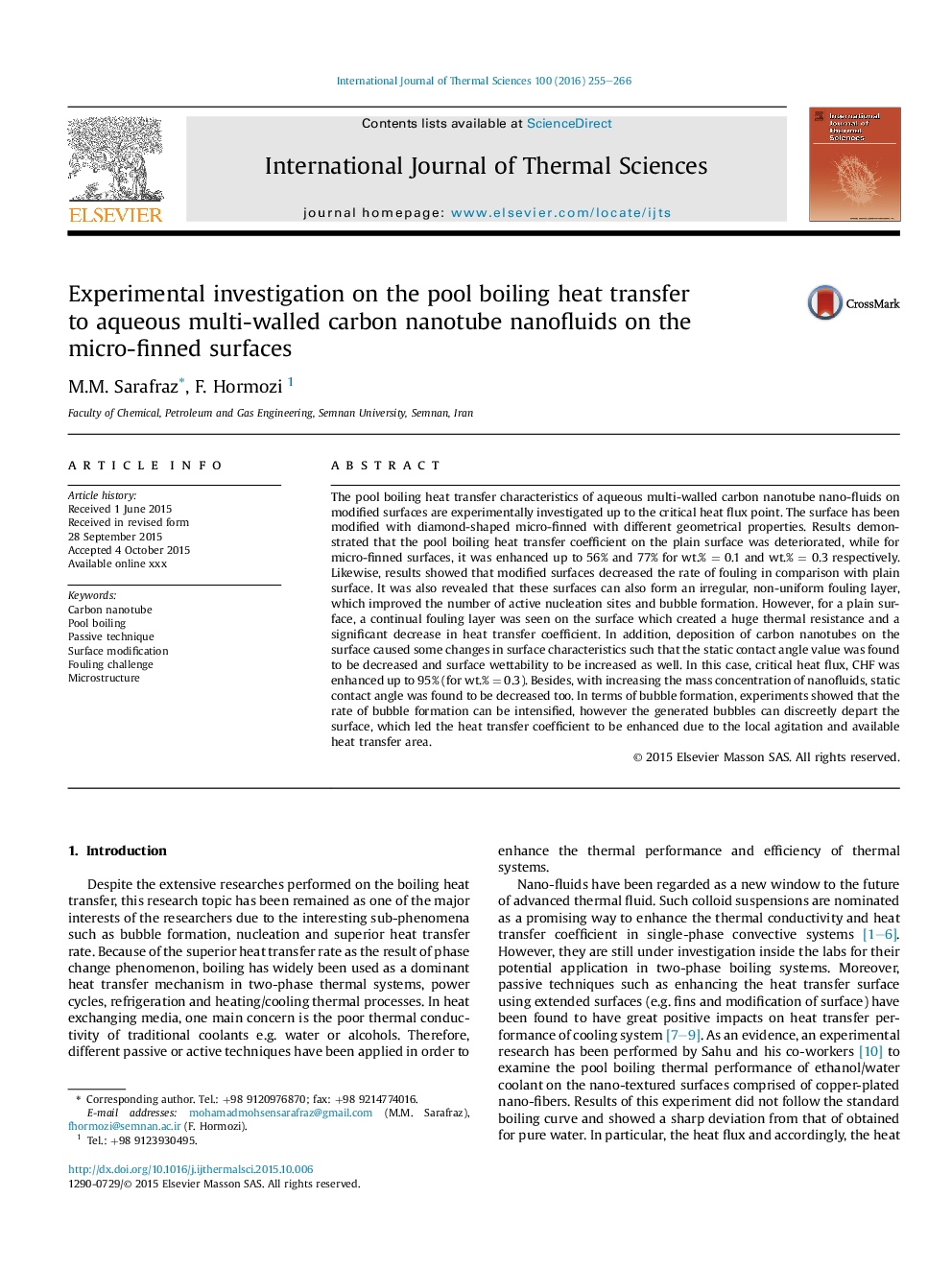| کد مقاله | کد نشریه | سال انتشار | مقاله انگلیسی | نسخه تمام متن |
|---|---|---|---|---|
| 669089 | 1458722 | 2016 | 12 صفحه PDF | دانلود رایگان |
عنوان انگلیسی مقاله ISI
Experimental investigation on the pool boiling heat transfer to aqueous multi-walled carbon nanotube nanofluids on the micro-finned surfaces
ترجمه فارسی عنوان
بررسی تجربی روی انتقال گرما به گرمایش آب به نانوسیم های کربنی نانولوله کربنی چند جداره بر روی سطوح میکرو فین
دانلود مقاله + سفارش ترجمه
دانلود مقاله ISI انگلیسی
رایگان برای ایرانیان
کلمات کلیدی
نانولوله کربنی، جوشاندن استخر، تکنیک منفعل، اصلاح سطح، چالش دردناک ریز ساختار،
موضوعات مرتبط
مهندسی و علوم پایه
مهندسی شیمی
جریان سیال و فرایندهای انتقال
چکیده انگلیسی
The pool boiling heat transfer characteristics of aqueous multi-walled carbon nanotube nano-fluids on modified surfaces are experimentally investigated up to the critical heat flux point. The surface has been modified with diamond-shaped micro-finned with different geometrical properties. Results demonstrated that the pool boiling heat transfer coefficient on the plain surface was deteriorated, while for micro-finned surfaces, it was enhanced up to 56% and 77% for wt.%Â =Â 0.1 and wt.%Â =Â 0.3 respectively. Likewise, results showed that modified surfaces decreased the rate of fouling in comparison with plain surface. It was also revealed that these surfaces can also form an irregular, non-uniform fouling layer, which improved the number of active nucleation sites and bubble formation. However, for a plain surface, a continual fouling layer was seen on the surface which created a huge thermal resistance and a significant decrease in heat transfer coefficient. In addition, deposition of carbon nanotubes on the surface caused some changes in surface characteristics such that the static contact angle value was found to be decreased and surface wettability to be increased as well. In this case, critical heat flux, CHF was enhanced up to 95% (for wt.%Â =Â 0.3). Besides, with increasing the mass concentration of nanofluids, static contact angle was found to be decreased too. In terms of bubble formation, experiments showed that the rate of bubble formation can be intensified, however the generated bubbles can discreetly depart the surface, which led the heat transfer coefficient to be enhanced due to the local agitation and available heat transfer area.
ناشر
Database: Elsevier - ScienceDirect (ساینس دایرکت)
Journal: International Journal of Thermal Sciences - Volume 100, February 2016, Pages 255-266
Journal: International Journal of Thermal Sciences - Volume 100, February 2016, Pages 255-266
نویسندگان
M.M. Sarafraz, F. Hormozi,
